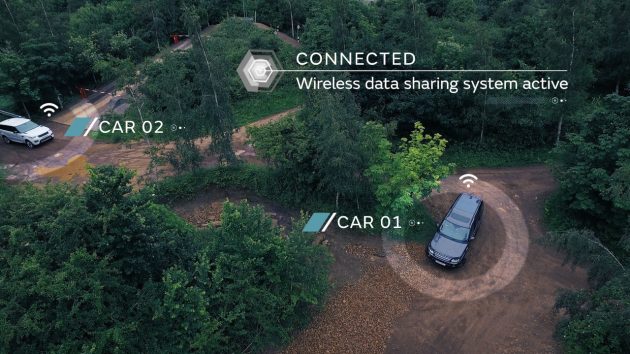Nowadays, an electronic helping hand for control over a car isn’t all that surprising, but Jaguar Land Rover takes it a step further – a natural step perhaps, given the origins of the Solihull part of the brand – off the pavement, on to a wider range of environments and conditions.
JLR is working on a wide range of technology that works towards enabling its vehicles to drive autonomously; both on the road as well as beyond it, where surface identification and three-dimensional path-sensing systems employ cameras, ultrasonic, radar and lidar sensors to give the vehicle a 360-degree view of the environment around it. It’s a system that could help determine road surface characteristics, down to the width of a tyre, even in rain and falling snow, to plan its route.
“We don’t want to limit future highly automated and fully autonomous technologies to tarmac. When the driver turns off the road, we want this support and assistance to continue. In the future, if you enjoy the benefits of autonomous lane keeping on a motorway at the start of your journey, we want to ensure you can use this all the way to your destination, even if this is via a rough track or gravel road,” said Tony Harper, head of research for JLR.
Ultrasonic sensors can identify surface conditions up to five metres ahead of the vehicle, which guides the Terrain Response system in changing its settings before the car drives from one surface to another. With the 3D path sensing system, branches overhanging a track, or a car park overhead barrier would also need to be identified to determine if the route ahead is clear.
Off-Road Connected Convoy, a system that links vehicles together with dedicated short range communications technology, essentially gets vehicles talking to each other. The system shares information including location, wheel slip and articulation, as well as Terrain Response and All-Terrain Progress Control settings between cars which enables them to instantly adjust to suit.
When dealing with more rough surfaces, terrain-based speed adaptation is another system being researched for occupant comfort. Cameras scan and detect the kinds of surface it will encounter ahead, and automatically adjusts the vehicle’s speed for comfortable passage.
For concerns of tall vehicles negotiating low-hanging obstructions, Overhead Clearance Assist uses stereo camera technology to scan ahead. The system is programmable with the vehicle’s height, which can include payloads such as roof boxes or bicycles, and the car will warn the driver if there is not enough clearance.
JLR has not indicated how soon these systems will be production ready, therefore it may be safe to say they aren’t about to reach showrooms anytime soon.
Looking to sell your car? Sell it with Carro.








inb4 haiwan puteh cause autopilot to kirr pipu
Proton and their staff also got autonomous tech…..they can automatically fall asleep during office hours and MAS and Perkasa will come and defend them saying it is our culture to sleep during work hours